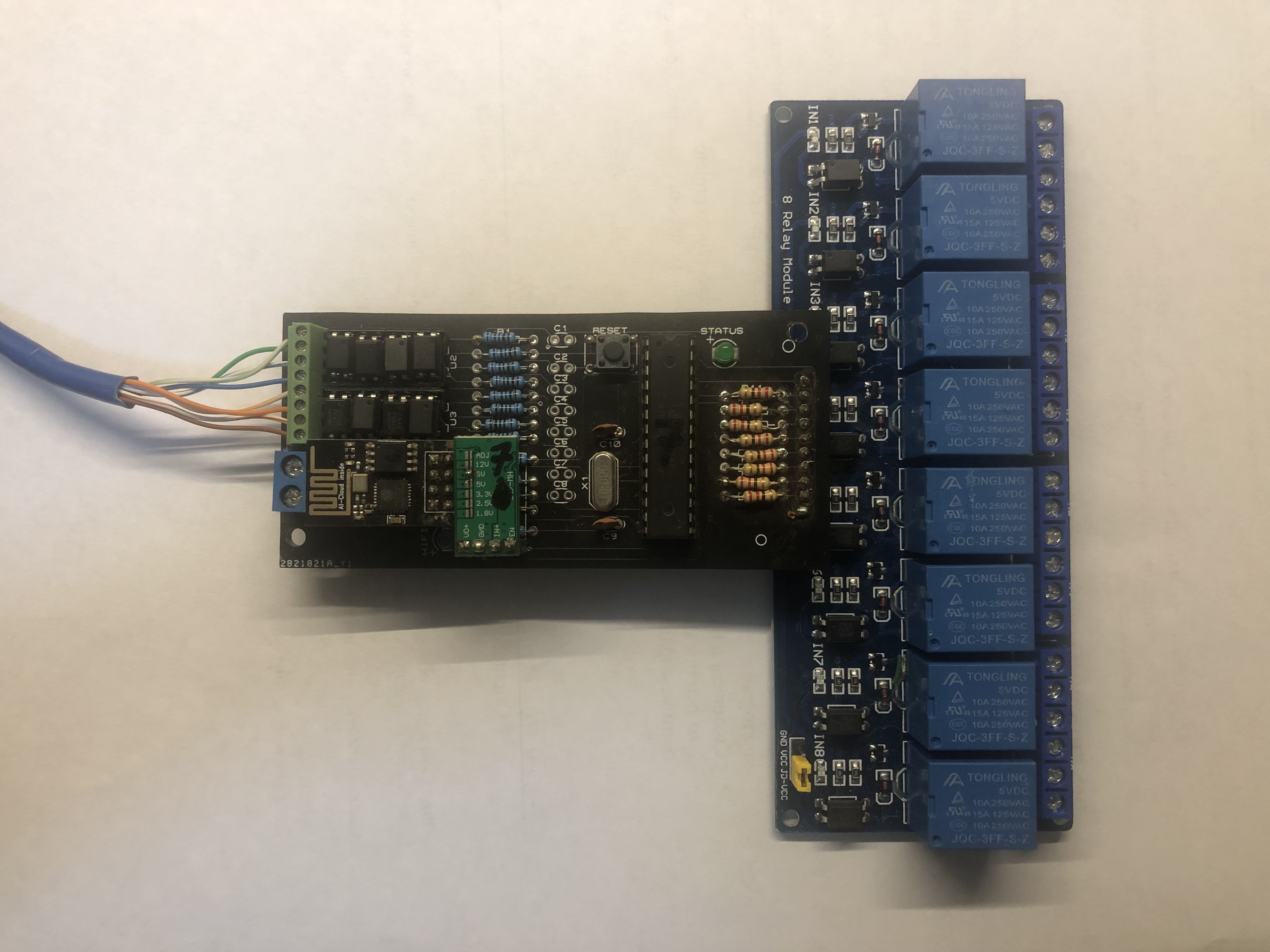How to Clean PCBs after Surface Mount Soldering
Published on 1/15/2019 6:33:09 PM
Description
<p style="margin-top:0.0000pt;margin-right:0.0000pt;margin-bottom:0.0000pt;margin-left:0.0000pt;padding:0pt 0pt 0pt 0pt;mso-pagination:widow-orphan;line-height:18.9000pt;"> <span style="font-family:"font-size:18px;">Whenever electronics products go through soldering, flux or other types of contaminants are always left on the surface of PCBs (Printed Circuit Boards) even if halogen-free no cleaning flux is applied. Based on my experience, </span><span style="font-family:"font-size:18px;">never trust "no clean" too much</span><span style="font-family:"font-size:18px;">. One word, <a href="https://www.allpcb.com/sns/pcb-cleaning_65/" target="_blank">PCB cleaning </a>after surface mount soldering plays an essential role in guaranteeing reliability, electrical functions and life time of electronic products. This article will discuss the significance of cleaning after surface mount soldering and list some types of prevalent cleaning methods.</span> </p> <p style="margin-top:0.0000pt;margin-right:0.0000pt;margin-bottom:0.0000pt;margin-left:0.0000pt;padding:0pt 0pt 0pt 0pt;mso-pagination:widow-orphan;line-height:18.9000pt;"> <span style="font-family:"font-size:18px;"> </span> </p> <p style="margin-top:0.0000pt;margin-right:0.0000pt;margin-bottom:0.0000pt;margin-left:0.0000pt;padding:0pt 0pt 0pt 0pt;mso-pagination:widow-orphan;line-height:18.9000pt;"> <b><span style="font-family:"font-size:18px;">Significance of PCB Cleaning after Surface Mount Soldering</span></b><b></b> </p> <p style="margin-top:0.0000pt;margin-right:0.0000pt;margin-bottom:0.0000pt;margin-left:0.0000pt;padding:0pt 0pt 0pt 0pt;mso-pagination:widow-orphan;line-height:18.9000pt;"> <span style="font-family:"font-size:18px;"> </span> </p> <p style="margin-top:0.0000pt;margin-right:0.0000pt;margin-bottom:0.0000pt;margin-left:0.0000pt;padding:0pt 0pt 0pt 0pt;mso-pagination:widow-orphan;line-height:18.9000pt;"> <span style="font-family:"font-size:18px;">The following aspects are able to fully explain the significance of PCBA cleaning</span> </p> <p style="margin-top:0.0000pt;margin-right:0.0000pt;margin-bottom:0.0000pt;margin-left:0.0000pt;padding:0pt 0pt 0pt 0pt;mso-pagination:widow-orphan;line-height:18.9000pt;"> <span style="font-family:"font-size:18px;">After surface mount soldering,</span> </p> <p style="margin-top:0.0000pt;margin-right:0.0000pt;margin-bottom:0.0000pt;margin-left:0.0000pt;padding:0pt 0pt 0pt 0pt;mso-pagination:widow-orphan;line-height:18.9000pt;"> <span style="font-family:"font-size:18px;"> </span> </p> <p style="margin-top:0.0000pt;margin-right:0.0000pt;margin-bottom:0.0000pt;margin-left:0.0000pt;padding:0pt 0pt 0pt 0pt;mso-pagination:widow-orphan;line-height:18.9000pt;"> <span style="font-family:"font-size:18px;">PCB cleaning after surface mount soldering can stop electrical defects from occurring.</span> </p> <p> <span style="font-family:"font-size:18px;"> </span> </p> <p style="margin-top:0.0000pt;margin-right:0.0000pt;margin-bottom:0.0000pt;margin-left:0.0000pt;padding:0pt 0pt 0pt 0pt;mso-pagination:widow-orphan;line-height:18.9000pt;"> <span style="font-family:"font-size:18px;">Among all the electrical defects, electrical leakage is the most protruding one, which is an essential element reducing long-term reliability of PCB boards. This type of defects is caused mainly by ionic contaminants, organic residues and other adhesion substances left on the surface of circuit boards.</span> </p> <p style="margin-top:0.0000pt;margin-right:0.0000pt;margin-bottom:0.0000pt;margin-left:0.0000pt;padding:0pt 0pt 0pt 0pt;mso-pagination:widow-orphan;line-height:18.9000pt;"> <span style="font-family:"font-size:18px;"> </span> </p> <p style="margin-top:0.0000pt;margin-right:0.0000pt;margin-bottom:0.0000pt;margin-left:0.0000pt;padding:0pt 0pt 0pt 0pt;mso-pagination:widow-orphan;line-height:18.9000pt;"> <span style="font-family:"font-size:18px;">PCB cleaning after surface mount soldering can eliminate erosive substances. Erosion will damage circuits, leading components or devices to brittleness. Erosive substances can conduct electricity in humid environment, which will further arouse PCB boards to shorts or even failures. Erosive substances elimination is actually excluding negative elements hindering long-term reliability of PCB boards.</span> </p> <p> <span style="font-family:"font-size:18px;"> </span> </p> <p style="margin-top:0.0000pt;margin-right:0.0000pt;margin-bottom:0.0000pt;margin-left:0.0000pt;padding:0pt 0pt 0pt 0pt;mso-pagination:widow-orphan;line-height:18.9000pt;"> <span style="font-family:"font-size:18px;">PCB cleaning after surface mount soldering can make board appearance look clear.</span> </p> <p style="margin-top:0.0000pt;margin-right:0.0000pt;margin-bottom:0.0000pt;margin-left:0.0000pt;padding:0pt 0pt 0pt 0pt;mso-pagination:widow-orphan;line-height:18.9000pt;"> <span style="font-family:"font-size:18px;"> </span> </p> <p style="margin-top:0.0000pt;margin-right:0.0000pt;margin-bottom:0.0000pt;margin-left:0.0000pt;padding:0pt 0pt 0pt 0pt;mso-pagination:widow-orphan;line-height:18.9000pt;"> <span style="font-family:"font-size:18px;">PCB boards cleaned after surface mount soldering look clear in appearance, making some defects exposed, convenient for inspection and troubleshooting such as heat damage and lamination.</span> </p> <p style="margin-top:0.0000pt;margin-right:0.0000pt;margin-bottom:0.0000pt;margin-left:0.0000pt;padding:0pt 0pt 0pt 0pt;mso-pagination:widow-orphan;line-height:18.9000pt;"> <span style="font-family:"font-size:18px;"> </span> </p> <p style="text-align:center;margin:0pt;padding:0pt;line-height:18.9pt;"> <img width="483" height="483" src="https://file.allpcb.com/bbs/19/01/15/182937354.jpg" /><span style="font-family:"font-size:18px;"> </span> </p> <p style="margin-top:0.0000pt;margin-right:0.0000pt;margin-bottom:0.0000pt;margin-left:0.0000pt;padding:0pt 0pt 0pt 0pt;mso-pagination:widow-orphan;line-height:18.9000pt;"> <span style="font-family:"font-size:18px;"> </span> </p> <p style="margin-top:0.0000pt;margin-right:0.0000pt;margin-bottom:0.0000pt;margin-left:0.0000pt;padding:0pt 0pt 0pt 0pt;mso-pagination:widow-orphan;line-height:18.9000pt;"> <b><span style="font-family:"font-size:18px;">Source Analysis of Contaminants</span></b><b></b> </p> <p style="margin-top:0.0000pt;margin-right:0.0000pt;margin-bottom:0.0000pt;margin-left:0.0000pt;padding:0pt 0pt 0pt 0pt;mso-pagination:widow-orphan;line-height:18.9000pt;"> <span style="font-family:"font-size:18px;"> </span> </p> <p style="margin-top:0.0000pt;margin-right:0.0000pt;margin-bottom:0.0000pt;margin-left:0.0000pt;padding:0pt 0pt 0pt 0pt;mso-pagination:widow-orphan;line-height:18.9000pt;"> <span style="font-family:"font-size:18px;">White contaminants left on the surface of PCB board after surface mount soldering feature complicated ingredients. They could be flux, oxide or reagent of flux and metal, solder mask and PCB lamination material. Apart from substances mentioned above, white contaminant generation is correlated with other elements including <a href="https://www.allpcb.com/drilling_pcb_design.html" target="_blank">PCB</a></span> </p> <p style="margin-top:0.0000pt;margin-right:0.0000pt;margin-bottom:0.0000pt;margin-left:0.0000pt;padding:0pt 0pt 0pt 0pt;mso-pagination:widow-orphan;line-height:18.9000pt;"> <span style="font-family:"font-size:18px;"><a href="https://www.allpcb.com/drilling_pcb_design.html" target="_blank">Design</a>, SMT technique(such as reflow soldering time and temperature), temperature and humidity.</span> </p> <p style="margin-top:0.0000pt;margin-right:0.0000pt;margin-bottom:0.0000pt;margin-left:0.0000pt;padding:0pt 0pt 0pt 0pt;mso-pagination:widow-orphan;line-height:18.9000pt;"> <b><span style="font-family:"font-size:18px;"> </span></b> </p> <h2 style="margin-top:15.0000pt;margin-bottom:12.0000pt;mso-pagination:widow-orphan;mso-line-height-alt:12pt;"> <b><span style="font-family:"font-size:18px;">Classifications of PCB Cleaning Methods after Surface Mount Soldering</span></b><b></b> </h2> <p style="margin-top:0.0000pt;margin-right:0.0000pt;margin-bottom:0.0000pt;margin-left:0.0000pt;padding:0pt 0pt 0pt 0pt;mso-pagination:widow-orphan;line-height:18.9000pt;"> <span style="font-family:"font-size:18px;">Manual Cleaning Method</span> </p> <p style="margin-left:0pt;text-indent:0pt;padding:0pt;background:#FFFFFF;"> <span style="font-family:"font-size:18px;"> </span> </p> <p style="margin-top:0.0000pt;margin-right:0.0000pt;margin-bottom:0.0000pt;margin-left:0.0000pt;padding:0pt 0pt 0pt 0pt;mso-pagination:widow-orphan;line-height:18.9000pt;"> <span style="font-family:"font-size:18px;">Acetone solution is used to soak PCB boards for about 10 minutes. Then, a banister brush is used to brush off contaminants at solder connection in ethanol solution. Next, board is taken out before deionized water is used to wash for 3 minutes. After that, absolute ethyl alcohol is leveraged for dehydration. Finally, nitrogen gas gun is used to dry the board surface until no water mark won't be seen.</span> </p> <p style="margin-top:0.0000pt;margin-right:0.0000pt;margin-bottom:0.0000pt;margin-left:0.0000pt;padding:0pt 0pt 0pt 0pt;mso-pagination:widow-orphan;line-height:18.9000pt;"> <span style="font-family:"font-size:18px;"> </span> </p> <p style="margin-top:0.0000pt;margin-right:0.0000pt;margin-bottom:0.0000pt;margin-left:0.0000pt;padding:0pt 0pt 0pt 0pt;mso-pagination:widow-orphan;line-height:18.9000pt;"> <span style="font-family:"font-size:18px;">During the process of manual cleaning, acetone with higher solubility is leveraged to soak circuit boards, which can effectively make contaminants dissolved into the solution. Then circuit board goes over physical brushing by placing circuit boards in ethyl alcohol with detailed flux contaminants brushed off. Next, organic solvent has to go through dehydration with the help of deionized water. Finally, nitrogen gas is used to dry the board surface to complete manual cleaning after surface mount soldering. This process can be summarized into the following figure.</span> </p> <p> <span style="font-family:"font-size:18px;"> </span> </p> <p align="center" style="margin-top:0.0000pt;margin-right:0.0000pt;margin-bottom:0.0000pt;margin-left:0.0000pt;padding:0pt 0pt 0pt 0pt;mso-pagination:widow-orphan;text-align:center;line-height:18.9000pt;"> <img width="682" height="61" src="https://file.allpcb.com/bbs/19/01/15/182951215.png" /> </p> <p> <span style="font-family:"font-size:18px;"> </span> </p> <p style="margin-top:0.0000pt;margin-right:0.0000pt;margin-bottom:0.0000pt;margin-left:0.0000pt;padding:0pt 0pt 0pt 0pt;mso-pagination:widow-orphan;line-height:18.9000pt;"> <span style="font-family:"font-size:18px;">Ultrasonic Cleaning Method</span> </p> <p style="margin-top:0.0000pt;margin-right:0.0000pt;margin-bottom:0.0000pt;margin-left:0.0000pt;padding:0pt 0pt 0pt 0pt;mso-pagination:widow-orphan;line-height:18.9000pt;"> <span style="font-family:"font-size:18px;"> </span> </p> <p style="margin-top:0.0000pt;margin-right:0.0000pt;margin-bottom:0.0000pt;margin-left:0.0000pt;padding:0pt 0pt 0pt 0pt;mso-pagination:widow-orphan;line-height:18.9000pt;"> <span style="font-family:"font-size:18px;">Acetone solvent is used in ultrasonic cleaning method. First, PCB board is soaked into acetone solvent for ten minutes. Then, it is placed into quartz container specialized for absolute ethyl alcohol in which circuit board is soaked. Next, ultrasonic cleaning is implemented after placing quartz container into ultrasonic cleaning tank. Ultrasonic</span> </p> <p style="margin-top:0.0000pt;margin-right:0.0000pt;margin-bottom:0.0000pt;margin-left:0.0000pt;padding:0pt 0pt 0pt 0pt;mso-pagination:widow-orphan;line-height:18.9000pt;"> <span style="font-family:"font-size:18px;">cleaning lasts for five minutes with ultrasonic power of 240W, after which quartz container is taken out with a basket after turning off ultrasonic cleaning switch. Then, deionized water is used to wash for 5 minutes and absolute ethyl alcohol is used to carry out dehydration on circuit board. Finally, nitrogen gas is used to make the surface dry.</span> </p> <p style="margin-top:0.0000pt;margin-right:0.0000pt;margin-bottom:0.0000pt;margin-left:0.0000pt;padding:0pt 0pt 0pt 0pt;mso-pagination:widow-orphan;line-height:18.9000pt;"> <br /> </p> <p style="margin-top:0.0000pt;margin-right:0.0000pt;margin-bottom:0.0000pt;margin-left:0.0000pt;padding:0pt 0pt 0pt 0pt;mso-pagination:widow-orphan;line-height:18.9000pt;"> <span style="font-family:"font-size:18px;">During the process of ultrasonic cleaning, circuit board is put into ethyl alcohol agent, which is different from manual cleaning. Depending on the principle of ultrasonic vibration, ultrasonic cleaning aims to wash off flux residue and dehydration is carried out by deionized water. Finally comes drying stage with the help of nitrogen gas. The whole procedure of ultrasonic cleaning is demonstrated in the following figure.</span> </p> <p style="margin-top:0.0000pt;margin-right:0.0000pt;margin-bottom:0.0000pt;margin-left:0.0000pt;padding:0pt 0pt 0pt 0pt;mso-pagination:widow-orphan;line-height:18.9000pt;"> <br /> </p> <p style="margin-top:0.0000pt;margin-right:0.0000pt;margin-bottom:0.0000pt;margin-left:0.0000pt;padding:0pt 0pt 0pt 0pt;mso-pagination:widow-orphan;line-height:18.9000pt;"> <span style="font-family:"font-size:18px;">Gas Phase Cleaning Method</span> </p> <p style="margin-top:0.0000pt;margin-right:0.0000pt;margin-bottom:0.0000pt;margin-left:0.0000pt;padding:0pt 0pt 0pt 0pt;mso-pagination:widow-orphan;line-height:18.9000pt;"> <span style="font-family:"font-size:18px;"> </span> </p> <p style="margin-top:0.0000pt;margin-right:0.0000pt;margin-bottom:0.0000pt;margin-left:0.0000pt;padding:0pt 0pt 0pt 0pt;mso-pagination:widow-orphan;line-height:18.9000pt;"> <span style="font-family:"font-size:18px;">Equipment condensing system is turned on first to let it run for 5 to 10 minutes. Then, equipment heating system is turned on to heat cleaning agent to boiling temperature. circuit board is placed into cleaning basket that is then placed into boiling tank. Boiling time lasts for 3 to 5 minutes. Next, basket is then placed into steam zone for steam cleaning for 3 to 5 minutes. Then, circuit board surface is sprayed with cleaning agent for 10 to 20 seconds. After that, basket is slightly placed into rinsing tank for 1 to 2 minutes. Finally, devices are dried through condensation and basket is taken out after the complete volatilization of agent.</span> </p>
45
comment
All comments
 Unknown
Unknown
5055
0
45
Rules about cashback: 1. Valid time: ALLPCB cashback activity will end on April 1st. 2. Capped amount: The capped amount of cashback for each account is $5,000. Each order can get a maximum of $2,000 cashback. That means every author can get $5,000 max. 3. Cashback range: The cashback activity only covers the corresponding PCB order. The order amount for other combined payment products will be invalid. 4. Clicking your own promotional link will be invalid. The same email address, shipping address, contact information, and phone number are all recognized as the same account. 5. ALLPCB has the final interpretation right of the cashback activity.
ALLPCB will donate 2% to the author for this promotion link.

